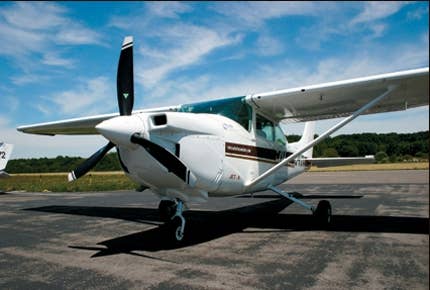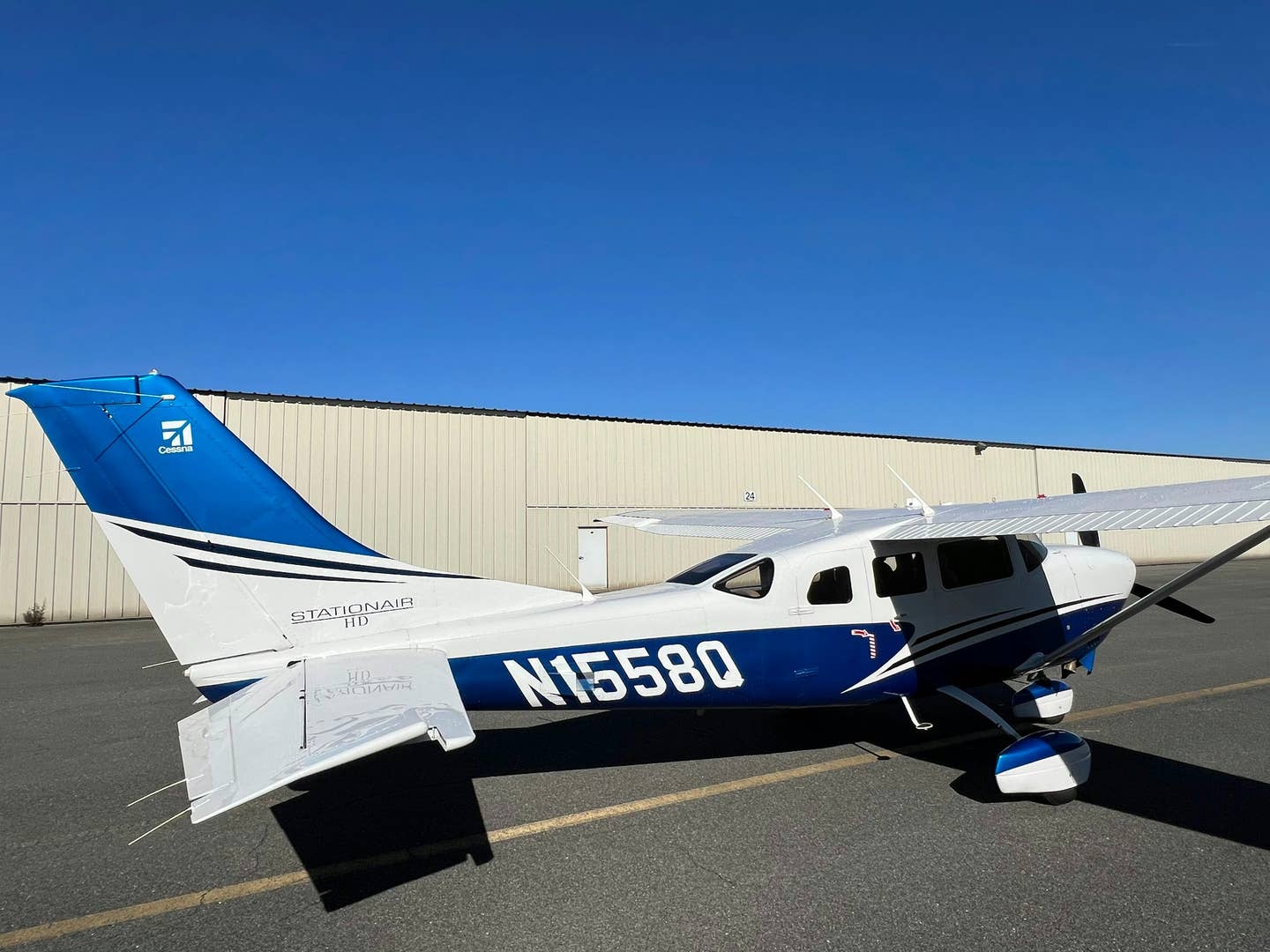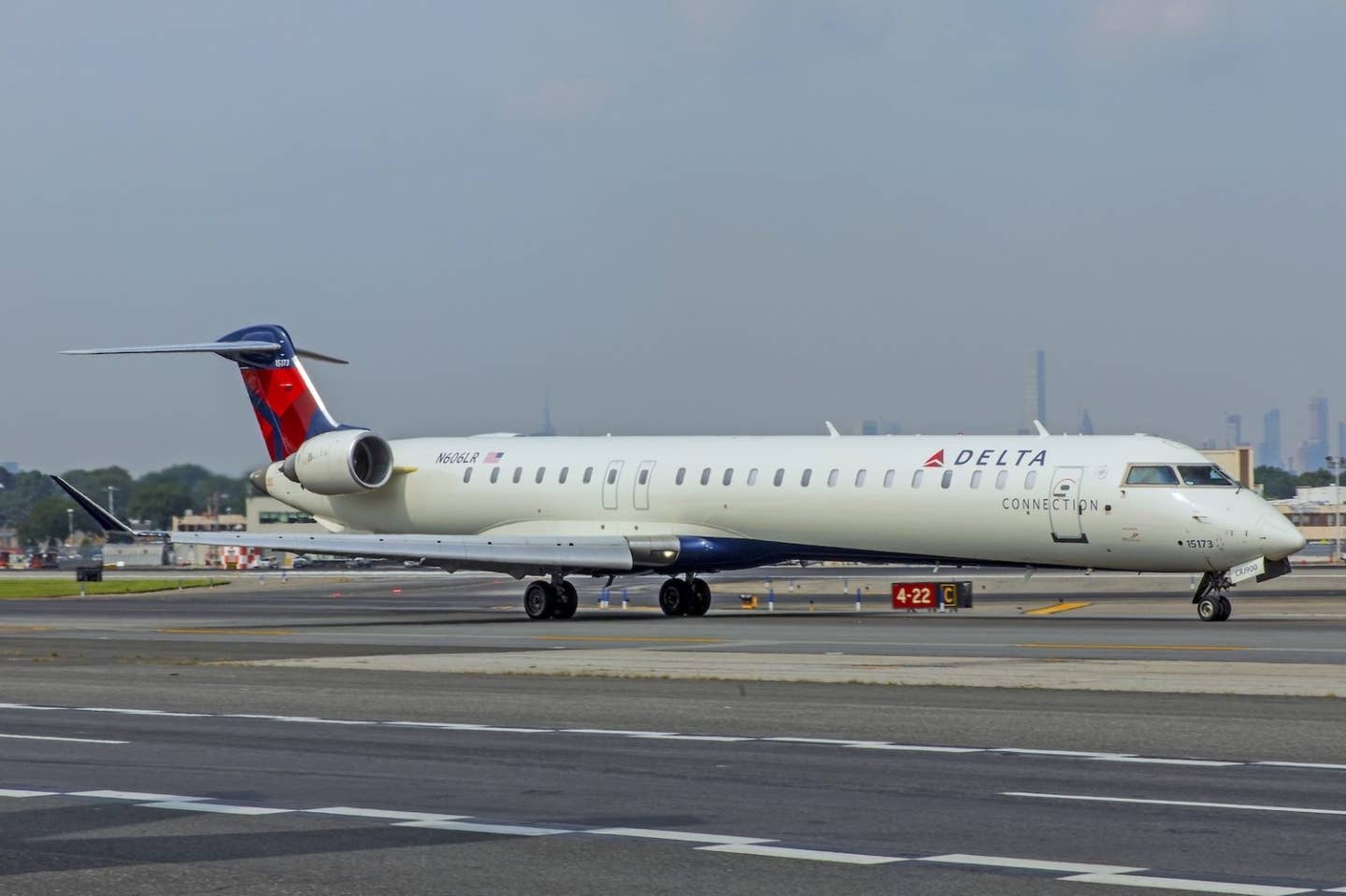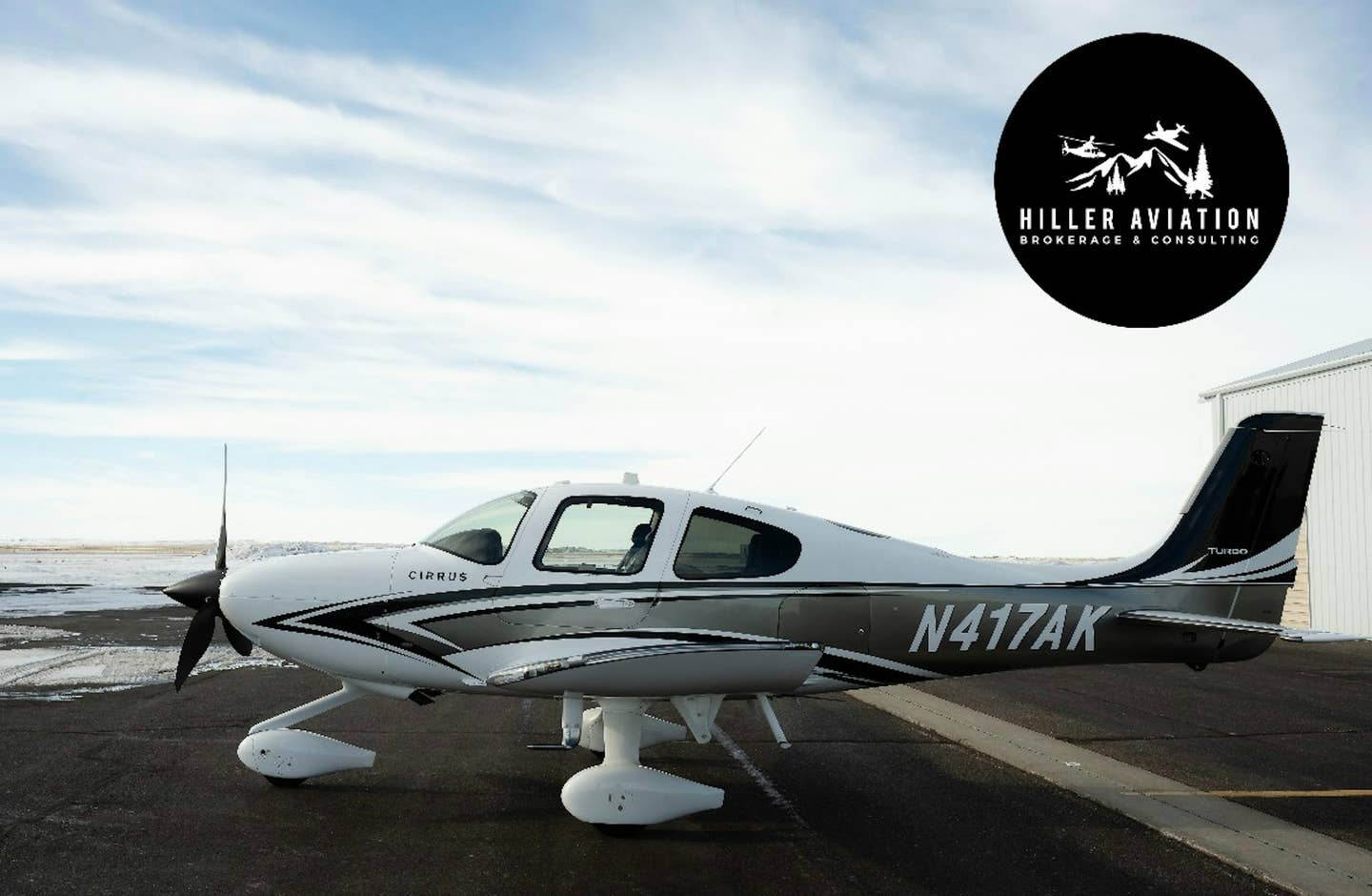
SMA (Societe de Motorisations Aeronautiques) has a solution to the effect of higher fuel prices if you operate a Cessna 182. Its answer? The SMA SR 305-230-1 diesel engine, designed and developed from scratch as an aircraft engine. The engine, STCed for most Cessna 182Qs and 182Rs, is a horizontally opposed, four-cylinder, turbocharged, air/oil-cooled, diesel engine with a wet sump-oil system, rated at 227 bhp for both takeoff and continuous power at 2200 rpm.
On a hot summer day, Francois Vrana, owner of C-FJTA, one of the first 182/SMA conversions, flew the airplane down to Columbia County, New York, from Montreal, Canada. The conversion was performed by Montreal-based NuTech Associates (nutechassociates.com) and the modified "smile" cowl with openings for the oil and the air coolers makes the mid-1970s 182 look more contemporary than its age.
While the cowl-and appropriate decals-announce that the SMA 182 is different from its original litter mates, the differences in the cockpit are more indicative that this is not your father's 182. The most striking-and obvious-clue to the distinction is the power quadrant in the lower center of the panel. There are two T-handle levers, one marked "Throttle" with a placard indicating the "Full Throttle" position, a white mark indicating the backup position, an "Idle" position and a "Cut-Off" position. The other lever is the "Mode Selector" with a "Normal" position and a "Mechanical Backup" position.
Another less obvious change to the flight deck is a vertical annunciator panel on the left side of the instruments with two lights: one amber and one red. The two bulbs are used to indicate a failure mode with the central processing unit (CPU), the computer that calculates the proper fuel/air mixture (eliminating the mixture control).
Initially, until it warms a bit the engine runs rough and rumbles a bit but quickly smoothes out. About a third of the engine cooling is provided by the airflow. The rest of the cooling is provided by engine oil that is used to cool hot zones in the cylinder head and the top portion of the cylinder barrel.
With the engine rumbling comfortably we taxied out to the active runway. I hadn't been aware of how quiet the engine was until we were halfway down the taxiway and I realized I hadn't switched on the active noise-canceling feature of my headset.
The run-up is simple, there is an independent "prop cycling control" that's used to make sure the system is working but there are no magnetos or a mixture control to worry about.
The takeoff is simple. You advance the throttle to the full forward position, check to be sure you have at least 80 inches (full throttle is about 90 inches-and if you want you can fly all day at that setting, but economy cruise is in the 60s and normal cruise is in the 70s) and continue the takeoff. The MT composite prop seems to like clawing skyward and we saw a rate of climb over 1,000 feet per minute on a way-above standard day. Indicated airspeed for a normal climb is 90 knots, but at that speed much of the sky is blocked; a higher climb speed still gives a healthy ascent while providing a better view out front.
If the ECU fails in flight, the warning lights indicate the severity of the fault. If the amber light comes on the problem is a "minor" fault and the flight may be continued, but the fault should be corrected before the next flight. When a "major" fault is indicated by the red warning light the throttle is moved to the backup mark and the mode selector is pulled back to the mechanical backup position. The flight can then be continued but a landing at the nearest suitable airport is required.
The airplane is still a Cessna 182 and for the most part, it flies like one. The airplane holds a total of 92 gallons, 88 of which are usable, the same as the unconverted airplane. But the diesel is much more efficient than the 182's piston engine. In standard conditions at 7,500 feet, at full throttle the SMA 182 hustles along at about 136 ktas while burning 10.3 gallons per hour for a range of more than 1,100 nm; throttled back to normal cruise, the book calls for a speed of 129 ktas and the fuel flow drops to 9.5 gallons per hour, increasing the range to 1,195 nm. If you want to go farther or use less fuel, at the economy setting of 61 inches the airplane burns 7.7 gallons per hour and at about 120 ktas can loiter for more than 11 hours or stretch out over some 1,365 nm.
According to Vrana, the fuel flow with the diesel is between 30 to 40 percent lower than the stock 182 engine. As a comparison, he pointed out that when he flew the unmodified 182 back to Montreal from California he was burning about 13.5 gallons per hour compared to the diesel's parsimonious thirst of about 10 gallons per hour at normal cruise.
For descent, you back the throttle off to 45 inches and lower 10 degrees of flaps below 140 kias; the rest can come out at 95 kias. Once you're sure of reaching the runway the power lever is brought back to idle and the manifold pressure drops to the yellow arc at about 35 inches. With a glide ratio of about 11 to 1 the airplane takes its time descending. The use of flaps and/or slips is necessary to control the approach.
I recently saw a listing of the average nationwide December 2007 fuel prices that had 100LL avgas at $4.72 per gallon and jet-A at $4.63, a difference per gallon of just under 10 cents. Over the life of the engine, the savings add up. The mod also makes sense if you're based in a location where avgas isn't plentiful. Which explains why of the 50 or so 182s that have undergone conversion, those based in the United States number in the single digits-so far.
The SMA 305 conversion kit is priced at $75,000, and installation is said to run about $7,000. It's easiest to justify the purchase if you have an old, beat-up 182 with a run-out engine that needs a new prop. And you may be able to reduce the cost by selling the old engine's core. For the moment, distributors and service centers for the SMA engine are located in Florida, Texas, California and Montreal. For more information, visit smaengines.com.

Sign-up for newsletters & special offers!
Get the latest FLYING stories & special offers delivered directly to your inbox






